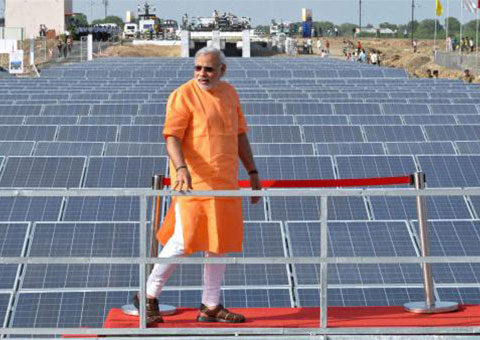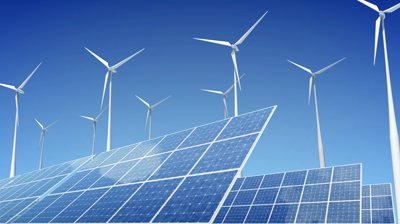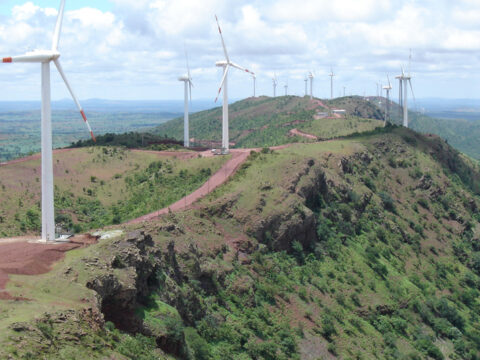239 results found for: solar thermal
India has one of the world’s largest renewable energy capacity, ranking amongst the top 5 countries in the world in terms of installed wind energy and […]
Solar Components exempted from Duty in India Indian solar producers who have been decimated by the severe global oversupply and price fall, have finally something to […]
Solar Installations by 2025 Global solar installations can reach 200 GW a year according to a new research by IEA. The report says that solar PV […]
Waaree Solar Panels The Waaree Energies Ltd. was founded in 2007 in India, having presence across the solar power value chain. The company has a 250 […]
Solar installation business has gained massive popularity in the last couple of years. Previously the solar companies used to just manufacture solar cells, wafers, modules or […]
Abengoa declines over debt issues The Spanish power giant Abengoa faces imminent bankruptcy proceedings, after another Spanish company failed to inject equity into the debt laden […]
EREC has released a new report “Re-thinking 2050” outlining the roadmap to make Europe 100% powered by renewable energy by 2050 . The report was released […]
1366 Technologies to ramp up Wafer Manufacturing Crystalline silicon technology has taken over the solar industry decimating other technologies such as CIGs, a-Si, solar thermal technology […]
Rooftop Solar Panels in India India’s solar rooftop market is set to explode in the coming years. The cost-effectiveness of solar power, rising electricity bills, and […]
Components of a Rooftop Solar System A rooftop solar system comprises of: a) Solar Panels/ Modules – The most important component of a rooftop system are […]
We at Greenworldinvestor, have time and again how rooftop solar is gaining traction worldwide. Land being a major constraint in developing economies, rooftop solar is becoming […]
Gamesa – Solar Power in India We at Greenworldinvestor have talked about the benefits of going solar. The technology is slowly but steadily gaining mass attention […]
First Solar not launching Series 5 Solar panel prices have crashed by around 30% globally in 2016 which has made every major producer rethink their strategy […]
India is Wasting Money On Expensive European Technology India has made a new offshore wind energy policy which aims at having a working offshore wind farm […]
Will Solar Power Tower Ever be Successful A Solar Power tower is a tower used to receive concentrated solar power. It is usually surrounded by heliostats […]
Solar AC in for INR 90,000 in India Solar products have remained niche entities till now as companies have not produced or marketed them effectively in […]
Can India really Install 6GW Wind Capacity in FY18 Suzlon chairman Tulsi Tanti thinks that India can do 6 GW of wind energy capacity next year […]
What is a Solar Tracker A Solar Tracker is a mechanical device which follows the movement of the sun as it rotates from the east to […]
A Solar Thermal Plant in Australia Australia is planning to build a 110 MW solar thermal power plant in Port Augusta for AU $650 million (USD […]
The Middle East Continues to make new records Saudi Arabia recently held its first large solar energy reverse auction and discovered another abysmally low price of […]
Solar plus Storage Market In Australia The extremely high costs of retail electricity in Australia has made it a hot market for solar energy plus storage […]
Renewable energy generated from wind, sunlight, water, biomass, and geothermal heat is the new technique to satisfy the need of electric consumption in Europe and other parts […]
Plans to export solar power to other countries is not a new concept and the most famous example was Desertec where a plan was to build […]
Solar energy because of its versatile and modular nature can be used in a wide variety of applications, unlike other energy sources that can mostly be […]
Going green means that you’re living in a manner that doesn’t hurt the environment. It’s more important than ever today as the damage occurs from man-made […]
Silicon is the undisputed ruler of solar technology today having beaten its competitors like CIGs, Cd-Te, and others by a huge mile over the past decade. […]
If I was a Google investor I would be alarmed by Google’s investment in a wind farm project.The $39 million investment though small is not what […]







